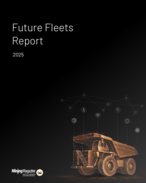In a program information bulletin issued this week by the government agency, scenarios and practices were highlighted as “best practices” for mobile roof supports (MRS), which have been heavily utilised in the industry for the past 15 years.
The accident earlier this year at Stillhouse Mining in Kentucky occurred while workers were moving MRS units. The incident brought the US fatality tally for pillar mining since 1998 to 17.
MSHA said eight of these deaths were directly related to the improper movement of MRS units or post installation.
MSHA said because MRS units can now be operated remotely, the level of safety has increased and the use of MRS now provides a stronger, safer level of support.
MSHA identified the following as “best practices” for MRS unit use in pillar mining:
Onboard, manually-operated controls should be “locked out” or under a “bolted down” cover plate to restrict their usage to maintenance and troubleshooting purposes only.
These controls, often called manual overrides, are meant for maintenance and troubleshooting use. Therefore, MSHA said use should be restricted to an outby area between solid pillars. Because it is possible for the units to be utilised unintentionally in an area of active pillaring, the controls may be “locked out” or kept under a under a “bolted down” cover plate to restrict the unit’s use.
Umbilical remote controls should only be used for tramming the MRS units between solid coal pillars.
“Umbilical remote control requires the operator to physically ‘plug-in’ or retrieve the pendent control on the MRS unit,” MSHA said. However, the agency reminded users not to make a connection until the unit was remotely taken to a safe location not within the active pillaring intersection after the most recent lift. To be safe, waiting until this point to plug in or retrieve the pendent and utilise it for tramming to the next location was recommended.
When tramming the MRS units, all personnel should be clear of pinch points between the units and between the units and the rib.
Pinch points are consistently scrutinised in the design, use and maintenance of equipment by the industry, and this case is no different. “Under no circumstances,” said MSHA, “should anyone, including the MRS operator, be permitted beside or within the turning radius of the MRS units when they are being moved.”
When setting and lowering the MRS, the operator should be positioned in a safe location, at least 20 feet away from the units.
While MSHA recognises that various distances are required “depending on MRS working height, immediate roof conditions, the amount of accumulated debris atop the units, or the lift being mined,” it stressed all workers be outby the MRS operator, including those involved in monitoring pressure, during the processes of setting and lowering.
While in the active pillaring area, the MRS units should be operated in pairs, using the radio remote control.
“One unit will never be offset more than one half the length of its companion unit” when units are being moved from lift to lift, MSHA directed, requiring a sequential move to the next area between solid pillars. The agency also noted the units should be moved to the next location immediately after; during the lift, the MRS units should be positioned as near the continuous miner as possible while maintaining practical use and safety.
While pillaring, MRS pressure gauges or colored area lights should be used to monitor roof loading.
MSHA noted that the operation’s management should determine and set the MRS units’ pressure levels. Because the gauges should be large and have the ability to be monitored remotely, they can be checked at all times. Additionally, mining should be halted when the pressure or current conditions of the roof change or become unsafe, or if the gauges or lights stop working for any reason.
Install the MRS cables with break-away cable hangers so that the cable can be pulled down remotely.
Doing this “will prevent personnel exposure to hazardous roof adjacent to the MRS units,” and the agency added that hangers cannot be recovered from blocks being pillared.
Precautions should be included in the roof control plan for supporting the roof in the event one of the MRS units becomes inoperative.
While every operation is different, there should be an alternative support plan in case repositioning of one or more MRS units is necessary. Wood supports are an acceptable substitute, but they should not be utilised in combination with a unit in a radius turn post application or used instead of an MRS on the same cut plan/lift sequence.
When parking the MRS units for an extended period of time, it should be positioned between solid coal pillars outby the active pillaring area. The units should remain in contact with the roof to prevent dynamic loading in the event of a roof fall.
Because an unsafe condition is created through roof or permanent support damage when pressurising of the MRS to roof is done in an area where workers will be working or traveling at any time, MSHA recommended the MRS unit be pressurised only with minimal force and only against the roof. Additionally, remote controls for the units should not be kept with the machines, but rather in another area the operation considers safe.
The roof control plan should include a method for the safe retrieval of a disabled or entrapped MRS.
For this practice, MSHA urges that operations train its workers in a test scenario before the plan is ever needed for a true emergency.























